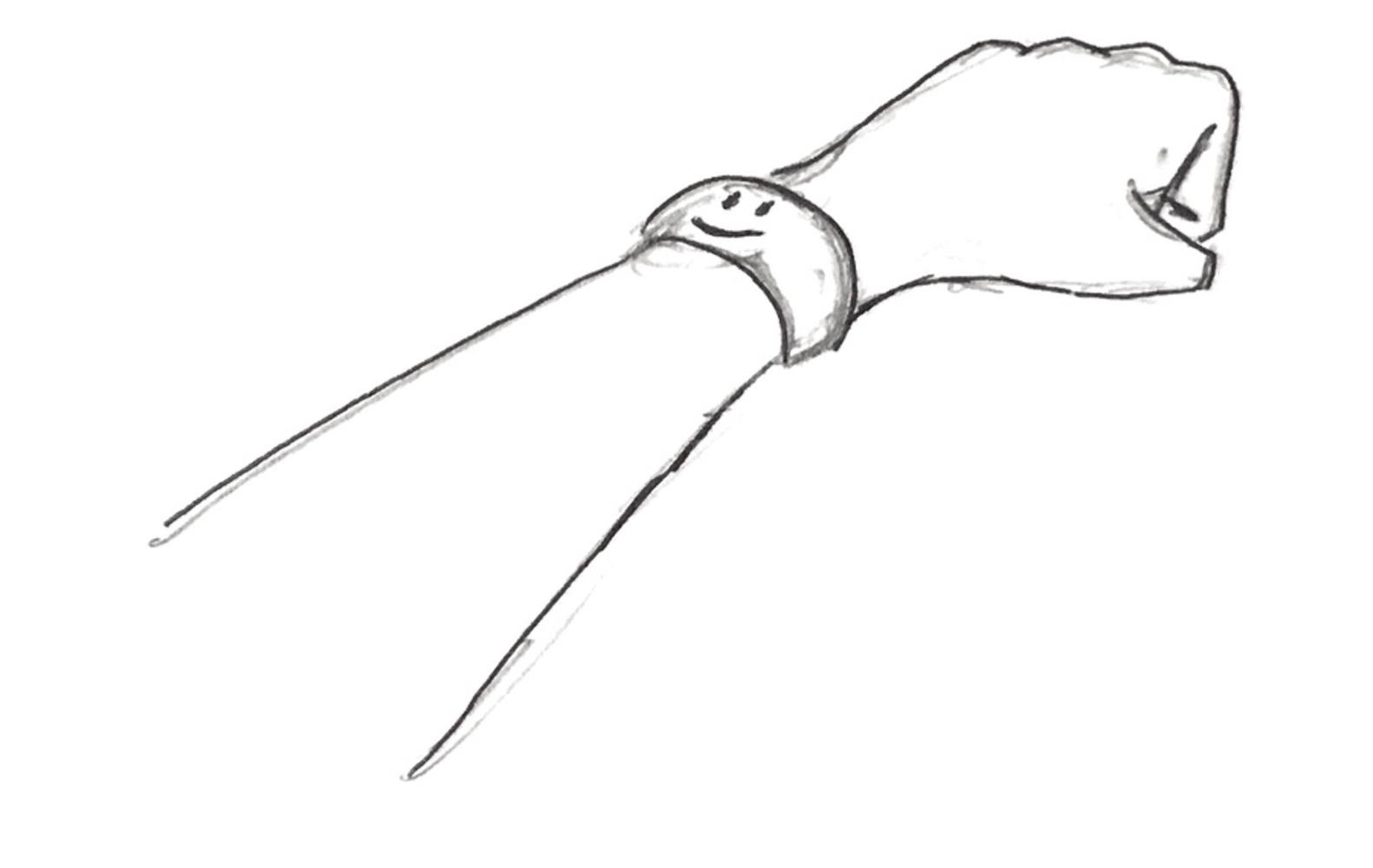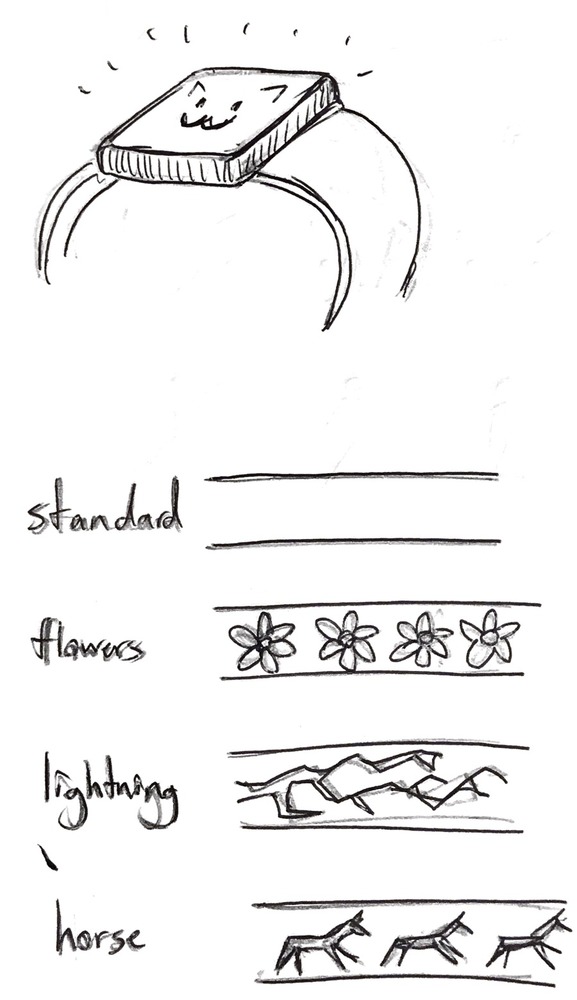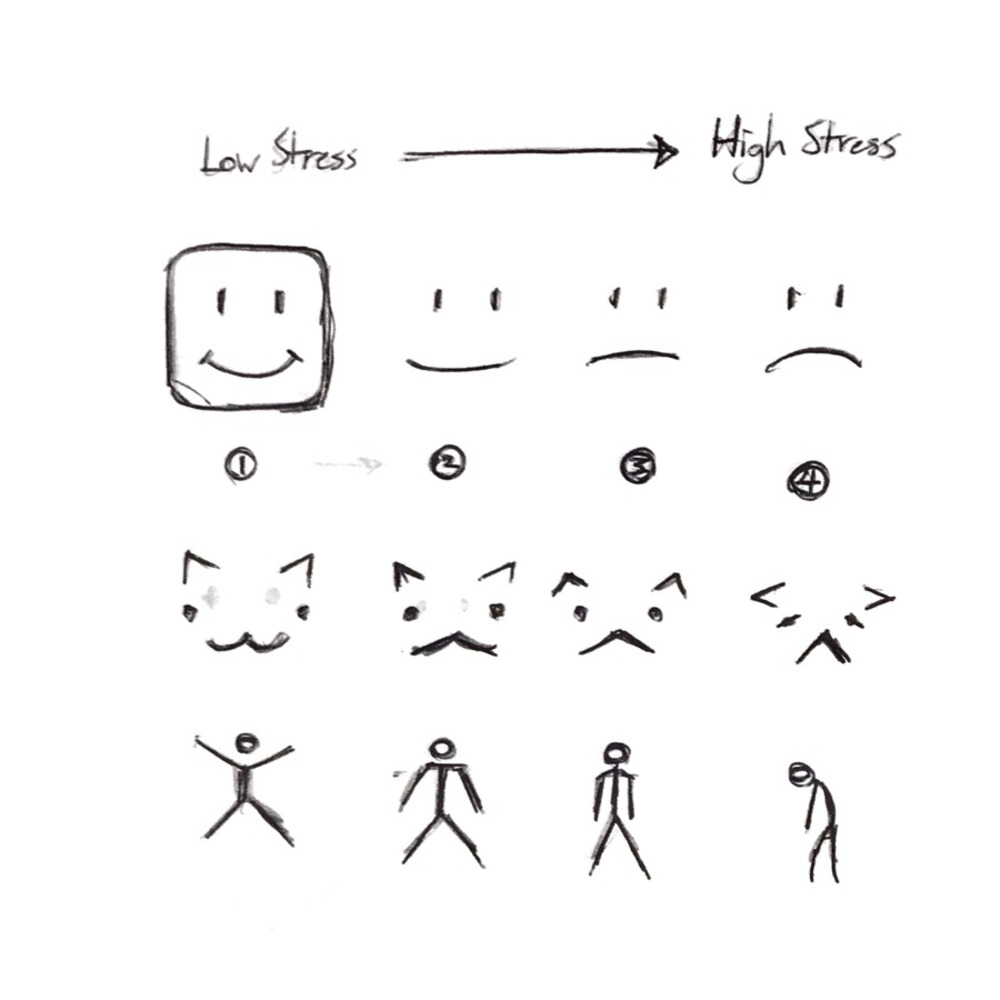The object is a bracelet that contains a multitude of sensors to detect several of the body's indicators for stress and Bluetooth connection to a smartphone in order to estimate the user's stress level and display it.
Outcome
The central electronics hub contains a variety of sensors used to estimate stress level. These include:
- Heart rate sensor
- Muscle tension sensor
- Skin conductance sensor
- Bluetooth node
The Bluetooth node would allow the bracelet to connect to the user's smartphone for additional lifestyle information, such as their calendar and their miles walked. The bracelet will then use these factors to make an estimation of the user's stress level.
This estimation is conveyed on the main screen at the top of the electronics hub with a dimly-lit colored symbol scale from red to green, with red being critically stressed and green being unstressed. The symbol is by default a smiley that progressively frowns as the stress estimation increases, but can be swapped for: 1) a cute cat face 2) a number 3) an expressive stick figure 4) a flower growing and wilting; and more. This display is intended to be evident to both the user and other people near the user, but not offensively so.
This device would at first seem to be a cute and helpful device to help users regulate their own stress levels, and communicate the stress level to other people. However, it would have the potential to add an unwelcome dimension to communicating with other people; others may try to "coddle" a user who's bracelet indicates they are stressed, or be more cavalier with a user who's bracelet indicates they are not stressed.
The unwelcome and unexpected dimension is a recurring theme in the realm of IoT. Human interactions with each other and the world around them are complex, and even small changes, such as a slowing slouching statue, have the potential to create change, desire or undesired. Something as a sensitive as personal stress level is now within feasibility of being measured and communicated by IoT devices, but the question should always be asked, should it be?
In this hypothetical case, one of the problems is that the bracelet cannot be completely accurate, nor is it subtle; different people respond to and manage stress differently, on a physiological level and psychological level, so a simple color and symbol scale may be too much of a simplification. The difference in treatment received by a low-stress indicating users and high-stress indicating users (potentially the same user at different times) can cause dissonance and feelings of resentment, potentially exacerbating existing stress levels.
You can upload files of up to 20MB using this form.


